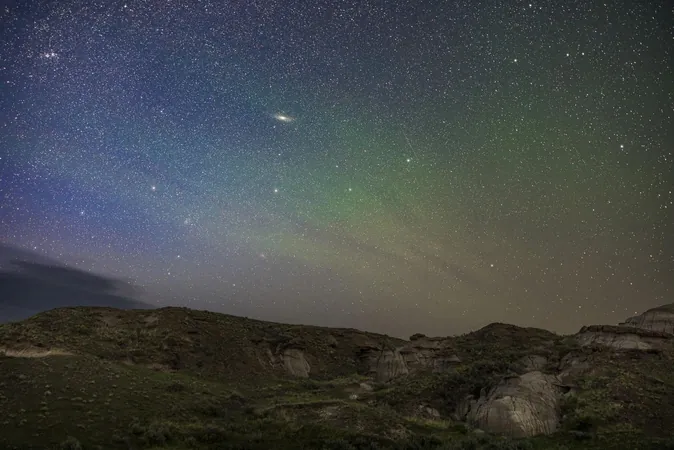
Catch a Glimpse of Saturn Under the Stars: The Great Square of Pegasus
2025-09-17
Author: Emma
As the September equinox approaches on September 22, heralding the arrival of autumn, there’s no need to wait for cooler days to experience a stellar show in the night sky!
Spotting the Great Square of Pegasus
This week, stargazers are in for a treat as one of the Northern Hemisphere’s most iconic star patterns, the Great Square of Pegasus, makes its dazzling appearance. You can easily spot this four-star formation shining brightly in the eastern sky after dark, a true sign that fall is almost here.
Where To Look for the Great Square
To find the Great Square, simply face east after sunset. Look for four bright stars that form a diamond shape: the top star is Scheat, with Alpheratz below left and Markab below right, while Algenib sits at the bottom closest to the horizon. Despite urban light pollution, the Great Square remains a standout feature, easily identifiable even in less-than-ideal conditions.
Enhance Your Stargazing Experience
This week offers an extra bonus for skywatchers. Nearby, glowing a golden hue, Saturn reaches its annual opposition on September 21, meaning it’s positioned directly opposite the sun from our perspective on Earth. At this time, Saturn shines brilliantly, appearing at its brightest (magnitude 0.6) and gracing the sky from sunset to sunrise! With a telescope, you’ll even get a stunning view of Saturn's iconic rings.
What Else Is Happening in the Night Sky?
The Great Square isn’t the only attraction this month. Get ready for a spectacular five-planet parade, best seen an hour before sunrise! Venus lights up the eastern horizon, followed by the brilliant Jupiter and Saturn, while the more distant Uranus and Neptune linger behind them.
As September 22 rolls around, also keep an eye out for the Northern Lights! The eerie phenomenon is more likely as autumn begins, thanks to the Russell-McPherron effect, which enhances geomagnetic storms.
Mark Your Calendars for Future Celestial Events
Don't miss out on an exciting event on September 21-22, 2025, when a partial solar eclipse will paint the sky — particularly in regions like New Zealand and Antarctica. Up to 86% of the sun's disk will be obscured, resulting in a breathtaking crescent-shaped sunrise.
Looking ahead to October, keep your eyes peeled for Comet Lemmon (C/2025 A6), expected to come into view around October 20-21, coinciding with the peak of the Orionid meteor shower under a new moon. If predictions hold true, this icy traveler could shine brightly enough to be visible to the naked eye.
Wishing you clear skies and an unforgettable stargazing experience!









 Brasil (PT)
Brasil (PT)
 Canada (EN)
Canada (EN)
 Chile (ES)
Chile (ES)
 Česko (CS)
Česko (CS)
 대한민국 (KO)
대한민국 (KO)
 España (ES)
España (ES)
 France (FR)
France (FR)
 Hong Kong (EN)
Hong Kong (EN)
 Italia (IT)
Italia (IT)
 日本 (JA)
日本 (JA)
 Magyarország (HU)
Magyarország (HU)
 Norge (NO)
Norge (NO)
 Polska (PL)
Polska (PL)
 Schweiz (DE)
Schweiz (DE)
 Singapore (EN)
Singapore (EN)
 Sverige (SV)
Sverige (SV)
 Suomi (FI)
Suomi (FI)
 Türkiye (TR)
Türkiye (TR)
 الإمارات العربية المتحدة (AR)
الإمارات العربية المتحدة (AR)